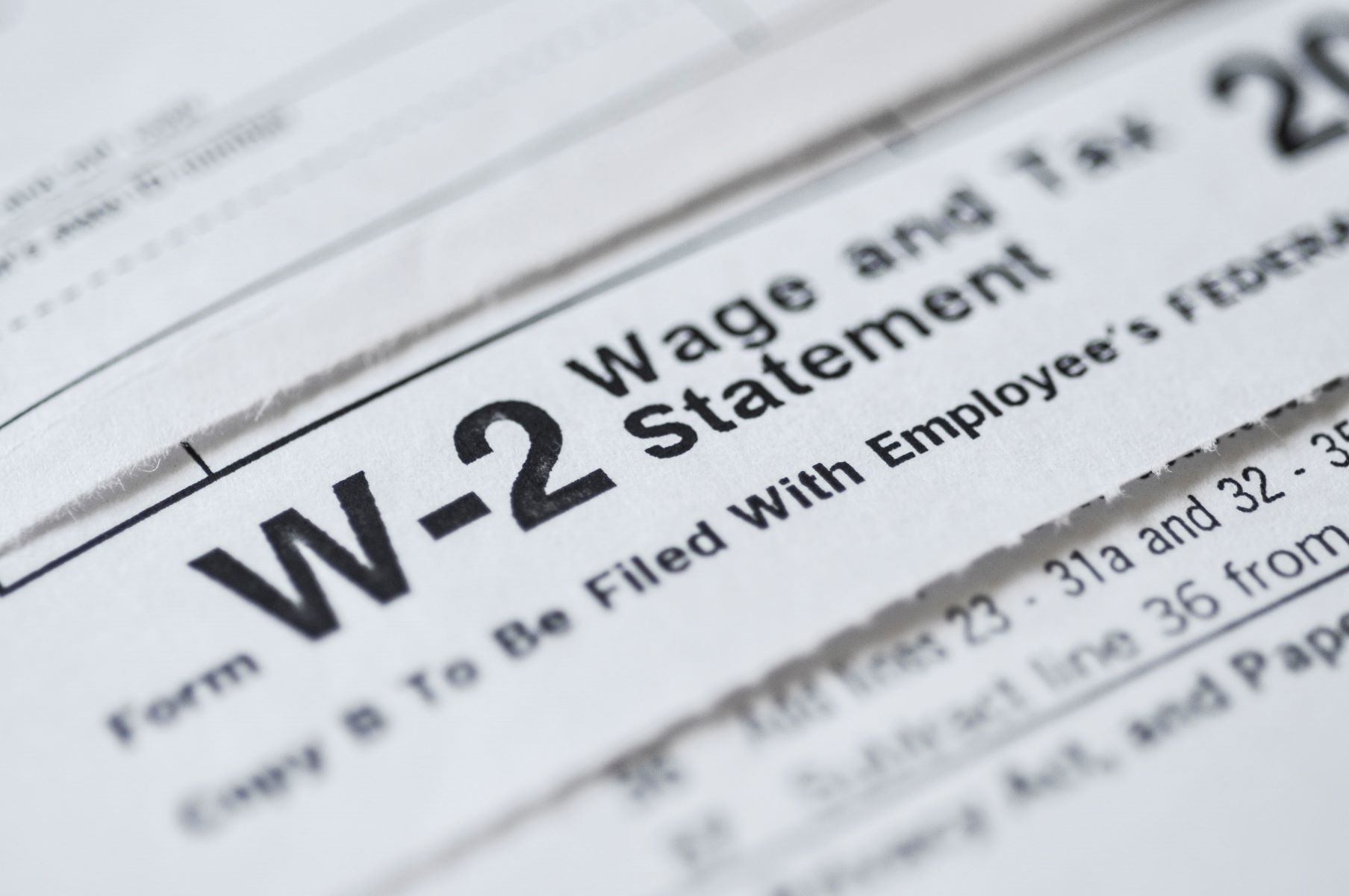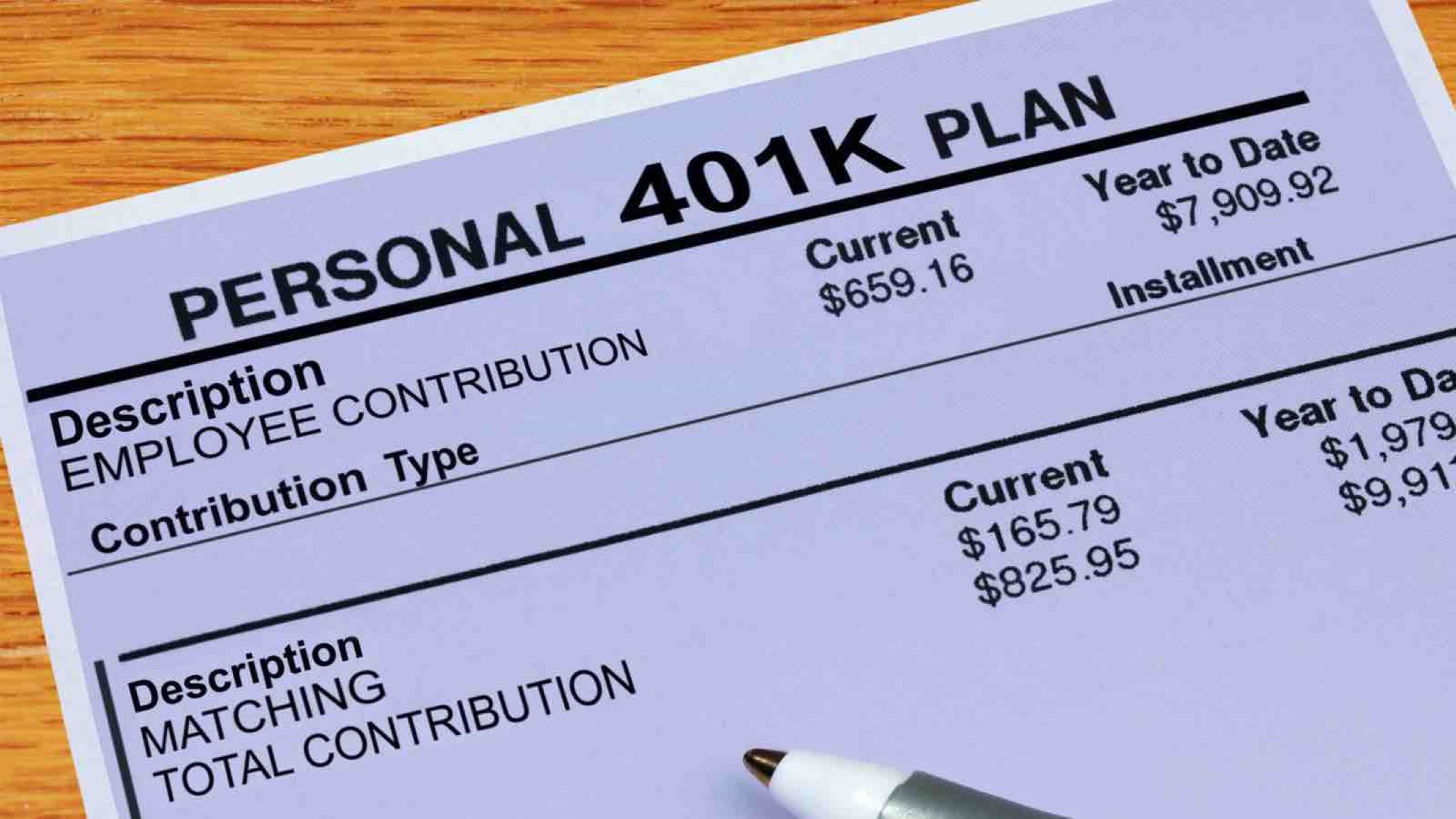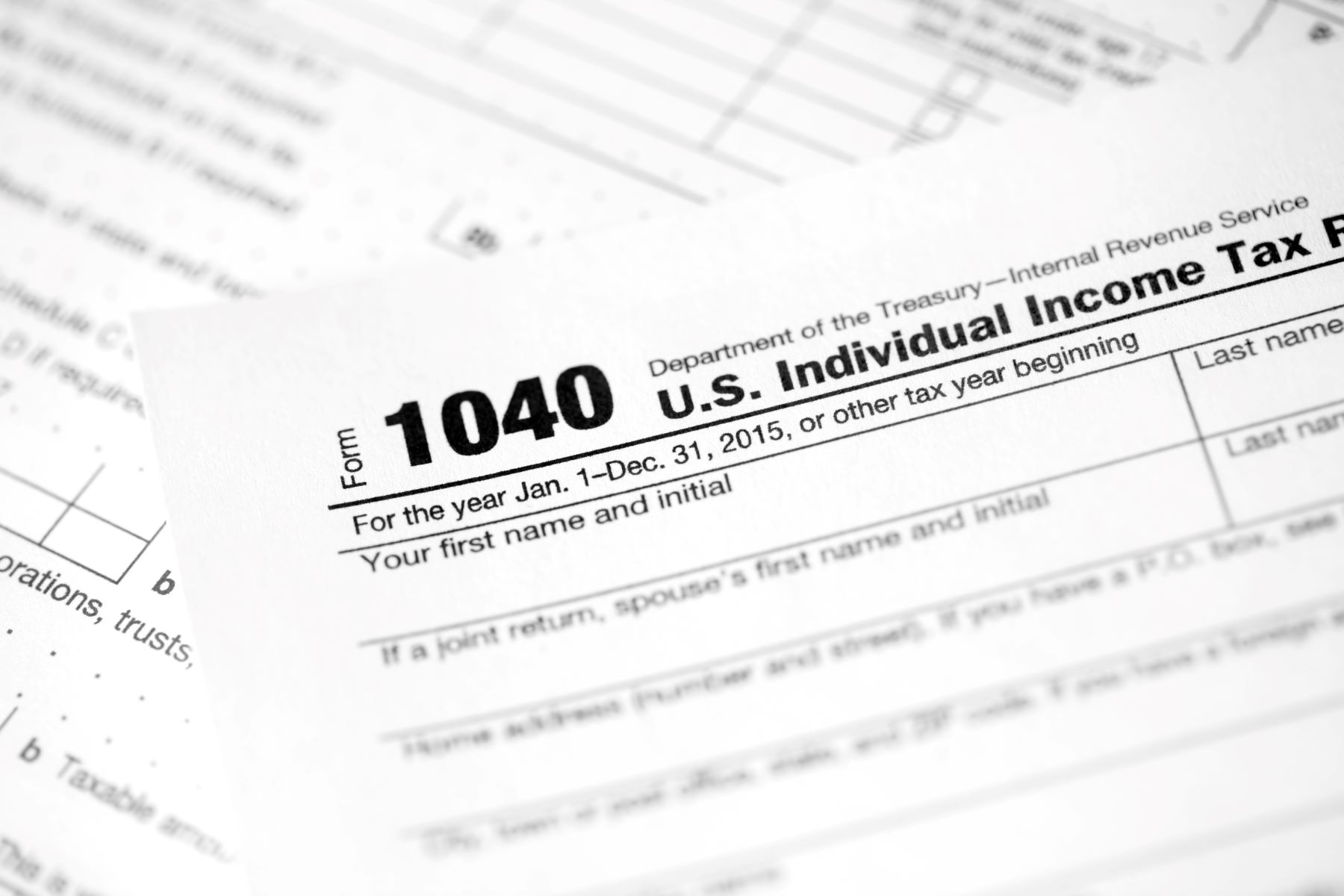

Finance
Where Are 401(k) Contributions On W-2
Modified: February 21, 2024
Looking for where to find 401K contributions on your W2? Get all the finance information you need and understand your retirement savings with this helpful guide.
(Many of the links in this article redirect to a specific reviewed product. Your purchase of these products through affiliate links helps to generate commission for LiveWell, at no extra cost. Learn more)
Table of Contents
Introduction
Welcome to the world of W2 forms and 401K contributions! If you’re new to the workforce or simply unfamiliar with tax documentation, you might be wondering where exactly your 401K contributions are reported on your W2 form. Well, wonder no more! In this article, we will explore the ins and outs of W2 forms and shed light on where you can find your 401K contributions.
Understanding the intricacies of tax forms can be overwhelming, especially when it comes to deciphering the various codes and sections. However, with a little guidance, you’ll soon grasp the fundamentals and be able to navigate your W2 form like a pro.
Before we delve into the specifics of 401K contributions on W2 forms, let’s first establish a basic understanding of what a W2 form is and why it is essential to your financial well-being.
A W2 form, also known as the Wage and Tax Statement, is a document that your employer provides to you and the Internal Revenue Service (IRS) at the end of the year. It summarizes the income you earned and the taxes withheld from your paycheck throughout the year.
The information on your W2 form is crucial for filing your annual income tax return. It helps determine your tax liability and ensures that you receive any potential tax refunds or credits you may be eligible for. It is vital to review your W2 form carefully to ensure accuracy and make any necessary corrections before submitting your taxes.
Now that we have a basic understanding of W2 forms, let’s turn our focus to the specific topic at hand: 401K contributions.
A 401K is a type of retirement savings plan offered by many employers. It allows employees to contribute a portion of their pre-tax income to a retirement account, which grows tax-deferred until withdrawn at retirement. 401K contributions are an essential tool for long-term financial planning and can provide significant tax advantages.
So, where exactly do these 401K contributions show up on your W2 form? Let’s explore that in the next section.
Understanding W2 Forms
Before we dive into the details of reporting 401K contributions on your W2 form, let’s take a moment to understand the essential components of the form itself. A W2 form is a standardized document that provides information about your annual earnings and the taxes withheld by your employer.
Here are the key sections you’ll find on a typical W2 form:
- Employee Information: This section contains your personal details, such as your name, address, and Social Security number.
- Employer Information: Here, you’ll find your employer’s name, address, and Employer Identification Number (EIN).
- Wages and Salaries: This section reports your total earnings for the year, including your wages, salaries, tips, and other forms of compensation.
- Taxes Withheld: This section outlines the taxes withheld from your paycheck, including federal income tax, state income tax, and Social Security and Medicare taxes.
- Other Compensation: This section includes any additional forms of compensation you received throughout the year, such as bonuses, commissions, and fringe benefits.
- Retirement Contributions: This is the section we’re particularly interested in. It displays the contributions you made to your retirement savings plans, including your 401K contributions.
- Other Deductions: This section lists any other deductions or pre-tax benefits you received, such as health insurance premiums or Flexible Spending Account (FSA) contributions.
- Employer Contributions: If your employer offers a matching contribution to your retirement account, it will be recorded in this section.
- Additional Information: This section may include any additional information related to your earnings or tax withholding, such as state-specific details or local taxes.
Understanding these sections is crucial for comprehending the different components of your W2 form. Now that we have a solid grasp of W2 forms, let’s move on to explore the specific details of 401K contributions and how they are reported on the W2 form.
What is a 401K Contribution?
Before we dive into the nitty-gritty of where 401K contributions appear on your W2 form, let’s take a moment to understand what exactly a 401K contribution is.
A 401K contribution is a type of retirement savings plan that is sponsored by employers and allows employees to save for their retirement. The name “401K” comes from the section of the Internal Revenue Code that governs these types of plans.
When you participate in a 401K plan, you have the opportunity to contribute a portion of your pre-tax income to a retirement account. This means that the money you contribute is deducted from your taxable income for the year, helping to lower your overall tax liability.
One of the key benefits of a 401K plan is that it allows your contributions to grow tax-deferred until you withdraw them in retirement. This means that you won’t pay any taxes on the earnings, dividends, or capital gains within the account until you start taking distributions.
Most employers offer a variety of investment options for your 401K contributions, ranging from low-risk options like bonds and money market funds to higher-risk options like stocks and mutual funds. This allows you to choose an investment strategy that aligns with your risk tolerance and long-term financial goals.
Another perk of 401K contributions is that many employers offer a matching contribution. This means that for every dollar you contribute to your 401K, your employer will contribute a certain percentage of that amount, up to a specified limit. Employer matching contributions are essentially free money that can significantly boost your retirement savings, so it’s important to take full advantage of this benefit if it’s available to you.
Keep in mind that there are annual contribution limits set by the IRS for 401K plans. For 2021, the maximum contribution limit is $19,500 for individuals under the age of 50 and $26,000 for individuals aged 50 and above. It’s essential to be aware of these limits to ensure that you maximize your contributions while staying within the allowable thresholds.
Now that we have a solid understanding of what a 401K contribution is, let’s explore how these contributions are reported on your W2 form.
Reporting 401K Contributions on W2 Forms
Now that you’re familiar with what a 401K contribution is, let’s discuss how these contributions are reported on your W2 form. The IRS requires employers to report your 401K contributions on your W2 form to ensure accurate tax reporting and compliance.
401K contributions are typically reported in Box 12 of your W2 form. This box is specifically designated for reporting various types of compensation and benefits. Within Box 12, your 401K contributions are indicated by a two-letter code, which represents the type of contribution.
The most common code used to report 401K contributions is “D.” This code represents elective salary deferrals, which are the contributions you make to your 401K plan directly from your salary before taxes are deducted. These contributions are often referred to as “pre-tax” contributions since they reduce your taxable income for the year.
Other codes that may be used to report 401K contributions include “AA” for Roth 401K contributions and “EE” for after-tax contributions. These codes indicate different types of contributions depending on the specific features of your employer’s 401K plan.
It’s important to note that the total amount of your 401K contributions for the year will be reported in Box 12 as a combined figure, regardless of the type of contribution code used. This means that if you made both pre-tax and Roth contributions, for example, the total combined amount of both contribution types will be included in Box 12.
Additionally, the total amount of your 401K contributions will also be reported in Box 3 of your W2 form, which represents your Social Security wages. This is important for ensuring that your Social Security benefits are accurately calculated based on your earnings.
It’s crucial to review your W2 form carefully to ensure that your 401K contributions are accurately reported. If you notice any discrepancies or errors, it’s advisable to contact your employer’s payroll department for clarification or to request a corrected W2 form.
Now that we understand where and how 401K contributions are reported on your W2 form, let’s delve deeper into the specific codes used in Box 12 to interpret these contributions.
Box 12 Codes for 401K Contributions
When it comes to reporting 401K contributions on your W2 form, Box 12 is the designated section. Within Box 12, various codes are used to indicate different types of compensation and benefits, including 401K contributions. Understanding these codes can help you interpret the information provided on your W2 form. Let’s explore some common Box 12 codes related to 401K contributions.
The most commonly used code for reporting 401K contributions is “D.” This code signifies elective salary deferrals, which are the contributions you make to your 401K plan directly from your salary before taxes are deducted. These pre-tax contributions reduce your taxable income for the year, providing a significant tax advantage.
Another code you may come across is “AA.” This code represents Roth 401K contributions. Unlike traditional 401K contributions, Roth contributions are made with after-tax dollars. While these contributions do not provide an immediate tax benefit, qualified withdrawals from Roth 401K accounts can be tax-free in retirement.
The code “EE” is occasionally used to report after-tax contributions. After-tax contributions are additional contributions made to your 401K plan with money that has already been taxed. While these contributions do not provide any immediate tax benefits, they can help diversify your retirement savings and potentially provide tax advantages when it comes to withdrawals.
It’s important to note that regardless of the specific code used, the total amount of your 401K contributions for the year will be reported in Box 12 as a combined figure. This means that if you made both pre-tax and Roth contributions, for example, the total combined amount of both contribution types will be included in Box 12.
It’s crucial to review the information provided in Box 12 of your W2 form to ensure that your 401K contributions are accurately reported. If you have any questions or notice any discrepancies, it’s recommended to reach out to your employer’s payroll department for clarification.
Now that we understand the various Box 12 codes related to 401K contributions, let’s discuss how to interpret these codes on your W2 form.
How to Interpret Box 12 Codes on W2 Forms
Box 12 of your W2 form contains several codes that represent different types of compensation and benefits, including 401K contributions. Understanding how to interpret these codes can help you make sense of the information provided on your W2 form. Let’s explore how to interpret the Box 12 codes related to 401K contributions.
First and foremost, it’s important to note that the codes used in Box 12 can vary depending on the employer and the specific 401K plan. However, the most common code for reporting 401K contributions is “D,” which represents elective salary deferrals. This code indicates the amount of pre-tax contributions you made to your 401K plan. These contributions lower your taxable income for the year, providing a tax advantage.
If you see the code “AA” on your W2 form, it signifies Roth 401K contributions. Roth contributions are made with after-tax dollars, meaning you don’t get an immediate tax benefit. However, qualified withdrawals from Roth 401K accounts can be tax-free in retirement.
Occasionally, you may come across the code “EE” on your W2 form. This code represents after-tax contributions. After-tax contributions are made with money that has already been taxed. While these contributions do not provide immediate tax benefits, they can offer potential tax advantages when it comes to withdrawals.
It’s important to note that the total amount of your 401K contributions for the year will be reported in Box 12 as a combined figure, irrespective of the specific code used. For example, if you made both pre-tax and Roth contributions, the total combined contributions will be included in Box 12.
When interpreting the Box 12 codes on your W2 form, be sure to review the amounts associated with each code and verify that they align with your records and expectations. If you have any questions about the codes or the reported amounts, don’t hesitate to reach out to your employer’s payroll department for clarification.
Understanding the Box 12 codes related to 401K contributions provides valuable insight into the employer-sponsored retirement savings reported on your W2 form. Now that we’ve covered how to interpret these codes, let’s explore the tax implications of 401K contributions on your W2 form.
Tax Implications of 401K Contributions on W2 Forms
When it comes to 401K contributions on your W2 form, there are several tax implications to consider. Understanding these implications can help you grasp the benefits and potential drawbacks of contributing to a 401K plan. Let’s explore the tax implications of 401K contributions on your W2 form.
One of the key advantages of making 401K contributions is that they are typically made on a pre-tax basis. This means that the amount you contribute to your 401K is deducted from your taxable income, reducing the overall amount of income that is subject to federal and state income taxes. As a result, your 401K contributions can potentially lower your tax liability for the year.
Additionally, your 401K contributions grow on a tax-deferred basis. This means that you won’t pay any taxes on the earnings, dividends, or capital gains within your 401K account until you start taking withdrawals in retirement. This tax-deferred growth allows your contributions to compound over time, potentially leading to significant long-term savings.
It’s important to note that while your 401K contributions reduce your taxable income for the year, they are not exempt from all taxes. You will still be responsible for paying Social Security and Medicare taxes on your 401K contributions. These taxes, commonly known as FICA taxes, fund the Social Security and Medicare programs.
Another tax implication to consider is the potential for employer matching contributions. If your employer offers a matching contribution to your 401K plan, these contributions are considered taxable income. The matching contributions will be included in your W2 form as part of your overall compensation and will be subject to federal and state income taxes.
It’s important to be aware of the annual contribution limits set by the IRS for 401K plans. Contributing more than the allowed limit may result in penalties and additional taxes. For 2021, the maximum contribution limit is $19,500 for individuals under the age of 50 and $26,000 for individuals aged 50 and above. It’s crucial to monitor your contributions throughout the year to ensure you stay within these limits.
While 401K contributions offer significant tax advantages, it’s also essential to consider the long-term implications. When you withdraw funds from your 401K in retirement, the withdrawals are subject to ordinary income tax. It’s important to plan and strategize withdrawals from your 401K to minimize the tax impact and make the most of your retirement savings.
Overall, the tax implications of 401K contributions on your W2 form can have a significant impact on your current tax liability and your future retirement savings. Understanding these implications can help you make informed decisions about contributing to your 401K and planning for your financial future.
Now that we’ve explored the tax implications of 401K contributions on your W2 form, let’s wrap up our discussion.
Conclusion
Understanding how 401K contributions are reported on your W2 form is crucial for managing your finances and planning for retirement. In this article, we’ve explored the various aspects of 401K contributions on W2 forms, from understanding the basics of W2 forms to interpreting the Box 12 codes that represent 401K contributions.
We started by establishing a foundation by explaining what W2 forms are and why they are important in the tax filing process. From there, we delved into the world of 401K contributions, discussing their significance as a retirement savings tool and the tax advantages they offer.
We then explored how 401K contributions are reported on W2 forms, specifically in Box 12. We identified common codes, such as “D” for pre-tax contributions and “AA” for Roth contributions, and emphasized the importance of reviewing your W2 form for accuracy.
Additionally, we discussed the tax implications of 401K contributions on your W2 form. We highlighted the benefits of pre-tax contributions, tax-deferred growth, and employer matching contributions. However, we also mentioned the responsibility of paying Social Security and Medicare taxes on 401K contributions, as well as the importance of staying within annual contribution limits.
In conclusion, your W2 form serves as a vital document for understanding your annual income and taxes withheld, including your 401K contributions. By familiarizing yourself with the reporting process and understanding the tax implications, you can optimize your financial planning and secure a brighter future in retirement.
Remember, if you have any questions about your W2 form or 401K contributions, it’s recommended to seek guidance from professionals or consult with your employer’s payroll department.
Armed with the knowledge gained from this article, you can navigate the complexities of your W2 form and confidently interpret the information related to your 401K contributions. So, take control of your financial future, maximize your retirement savings, and make informed decisions based on the insights provided on your W2 form.














